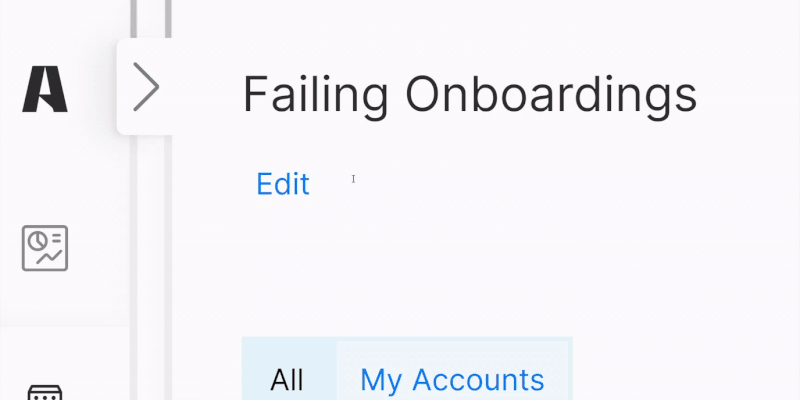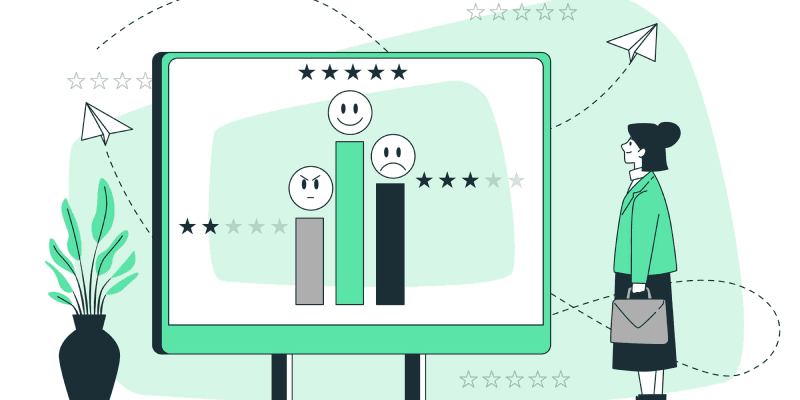Creating a Solid Customer Success Onboarding Process

It’s a SaaS industry truism that customers who experience positive and successful onboarding are much less likely to churn and are more likely to invest more in your solution over time. The converse applies for customers whose onboarding experience is sub-optimal.
So how do we define what a successful customer success onboarding process looks like and effectively implement one? It’s easier said than done, but with the right tooling and a proactive customer success team, delivering a successful onboarding process is easier than you might expect.
It starts, of course, with developing a thorough understanding of the motivations and requirements of your customers. Only then can you start to build a seamless route for your customers to achieve their desired outcomes and become passionate brand advocates.
Join us as we navigate through each step and unravel the onboarding strategies that can form the backbone of a successful customer journey and hopefully ensure your SaaS business consistent growth, sales, and revenue.
Customer Onboarding: Definition
Customer onboarding refers to the process through which a customer is introduced to a service or product and becomes familiar with it after the purchase or sign-up. In this initial customer journey phase, the main goals include orienting and educating clients, and ensuring they have a successful and smooth start with a company.
If you manage to help your customers feel satisfied and confident with your service, it will encourage them to continue using it and derive value from it in the shortest time possible. To motivate a certain client to become a loyal customer, customer onboarding and customer success should go hand in hand. While customer onboarding sets the foundation for a successful customer experience by facilitating product adoption and usage, customer success efforts should extend this relationship by nurturing and supporting clients to achieve desired outcomes. This is why we will use onboarding and customer success interchangeably throughout the text.
Onboarding Metrics You Should Keep an Eye on
One of the best ways to ensure customer success in onboarding is to track the right metrics to evaluate the effectiveness of the onboarding process and its impact on customer success. Here are the key onboarding metrics to track:
- Time To Value (TTV)
- This metric shows the time it takes for a customer to realize the value of the product or achieve their first success milestone after onboarding.
- Activation Rate
- It shows the percentage of clients who completed the activation steps or reached a specific usage threshold during onboarding. Therefore, it reflects how many customers are actively using the core features of your SaaS product or service.
- Feature Adoption and Engagement
- It identifies which features are popular or underused by measuring the usage and engagement levels of different features during onboarding.
- Drop-off Rate
- This metric tracks the points at which customers abandon the onboarding process or stop engaging with the platform. It helps you highlight the areas for improvement by pinpointing the stages where customers experience friction.
- Conversion Rate
- This one measures the percentage of new or trial users who convert into paying customers after the onboarding is completed.
- Customer Satisfaction (CSAT) and Net Promoter Score (NPS)
- CSAT measures customer satisfaction with the onboarding experience, while NPS assesses the likelihood of them recommending the product or service.
- Customer Health Score Changes
- It evaluates changes in the customer health score post-onboarding by considering usage patterns, satisfaction metrics, and engagement.
How to Create a Customer Onboarding Strategy?
Before going into creating a strategy, you may want to inform on the ways to enhance the onboarding process.
Here are step-by-step instructions for creating an effective onboarding strategy for SaaS:
1. Understand Your Customer’s Journey
The first step is to define customer segments and their goals, specific pain points, and needs. Make sure to outline the steps customers take from initial sign-up to becoming active users.
2. Set Goals and Milestones
It is crucial to establish measurable goals for onboarding – activation rate, feature adoption metrics, TTV, etc. Go through an onboarding checklist in order not to miss important steps.
3. Perform Customer Segmentation
Segment your customers into cohorts based on demographics, behavior (usage patterns, product adoption), lifecycle stage (trial, paid, renewal, upgrade stage), engagement, etc. With customer success platforms like Akita, you can integrate all your customer data into one place and get detailed reports about their status, health, and profiles. By filtering segments, you can get a full overview of each customer’s onboarding experience and easily assess whether it has stalled, failed, or gone smoothly. You can intervene manually or apply the triggered Akita playbook to make sure that the onboarding is completed as desired.
4. Offer Educational Resources and Training
Create comprehensive guides, videos, tutorials, FAQs, and other resources that address common user queries. It is always a good idea to offer live workshops, webinars, or personalized training sessions to keep customers engaged and facilitate learning.
5. Automate Whenever Possible
Automated onboarding emails can save you a lot of time, and in-app guidance like tours or walkthroughs can assist users in navigating features.
6. Provide Proactive Support
Offer live chat and personalized assistance for high-touch assistance.
7. Gather Feedback
Collect feedback at every stage of onboarding to identify pain points and areas for improvement. Then, use insights from feedback to refine the onboarding process as you go.
8. Track Key Metrics
Monitor key metrics to assess the effectiveness of onboarding, and use analytics tools to understand user behavior during onboarding.
9. Include Post-Onboarding Support and Opportunities
Offer ongoing support and additional resources to keep the clients engaged and motivated to respond well to your cross-sell and upsell offers.
How Customer Success Platforms (CSPs) like Akita Help Manage the Onboarding Process?
CSPs like Akita centralise all of your key customer data and can therefore identify where the onboarding process is working smoothly or failing.
If your customer is not engaging or is not taking the actions required for a successful onboarding, a filtered segment can pick this up and alert your team of the problem, or even better, trigger some action to intervene via an automated playbook.
The gif below shows a segment of At-Risk onboarding customers where it appears the onboarding may be failing. This knowledge and any accompanying automated action will ensure your team can mitigate this risk.

Conclusion
In SaaS, the customer success onboarding process is the key to establishing strong and enduring customer relationships. To be able to focus and deliver personalized guidance and communication alongside proactive support, you first need to understand each customer’s unique needs and preferences. This is precisely where Akita can help you with its advanced segmentation and customer interaction tracking tools, visual metrics, health scores, automated triggers, and many more!
Frequently Asked Questions
How long does customer success onboarding take?
The duration varies depending on factors like product complexity and customer requirements. It can last from a few days to several weeks, aiming to help clients become proficient users and increase business sales.
Is customer onboarding important for SaaS startups?
Of course! In SaaS startups, customer onboarding isn’t just about introducing users to the product; it’s about creating a memorable customer experience that drives product adoption, fosters long-term relationships with clients, and fuels business growth.
How can customers maximize their experience during onboarding?
This is a good one! By actively engaging with the provided resources, participating in training sessions, providing feedback, and, of course, communicating transparently their goals and expectations to the onboarding team.








